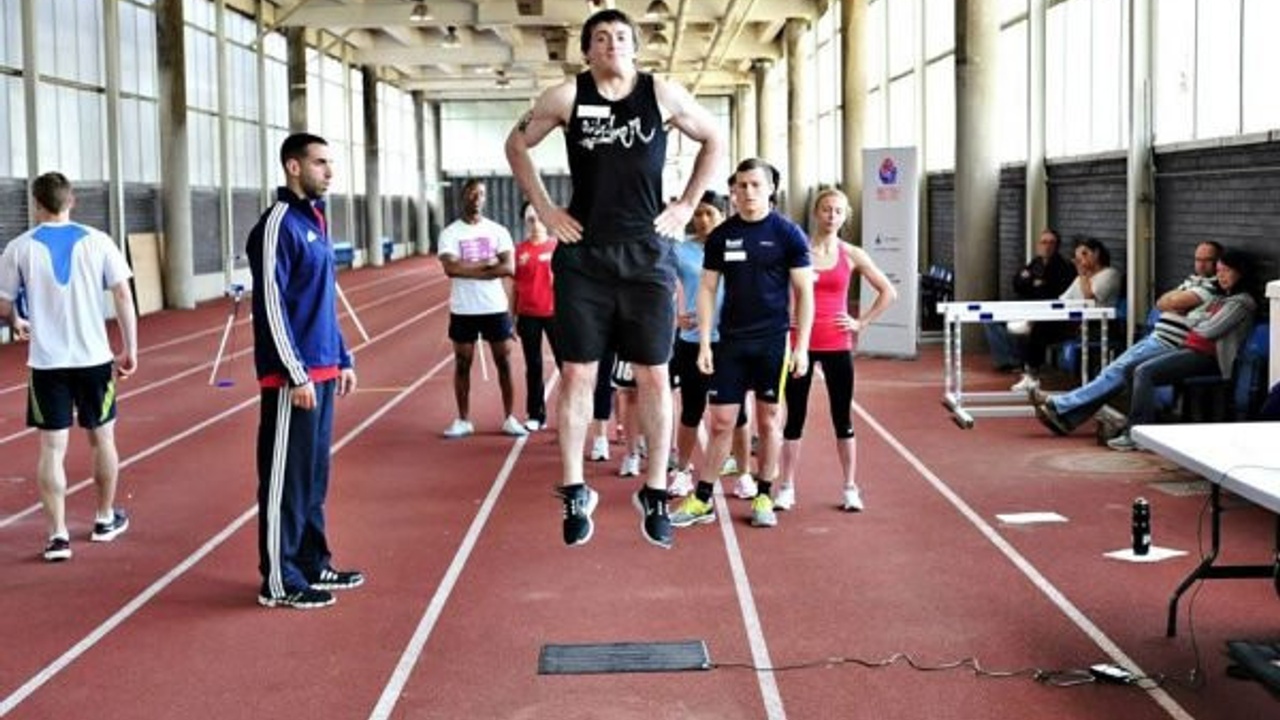
Monitor and Manage Fatigue with this Simple Jump Test
By William Wayland
The right balance of training stress and recovery improves performance, but this is difficult to achieve without monitoring. Luckily, technology has made this type of monitoring relatively simple.
Here is a test that we use with PUSH band or any velocity based measurement tool and a PVC pipe. I picked this up from a recent Dr Dan Baker seminar here in the UK. I was previously using PUSH apps built in RSI, but found it too inconsistent and threshold for fighters rather low (reactive strength endurance) may be of more importance.
I prefer this test, using just a PVC pipe. Performing 2-3 sets of 5 jumps in a row, we can take the best peak power velocity score in meters per second (m/s) and track it over time measuring 1-2 times a week. Peak power on Jump is very sensitive to neural fatigue, with 5-10% drops suggesting a drop in performance. Below Pro golfer Jordan performs the test.
https://www.youtube.com/watch?v=BroWsG3v7EY
Below is Biweekly Peak Power data I was measuring and used as part of Cory McKenna's run up to a December fight last year for the BCMMA Amateur title.
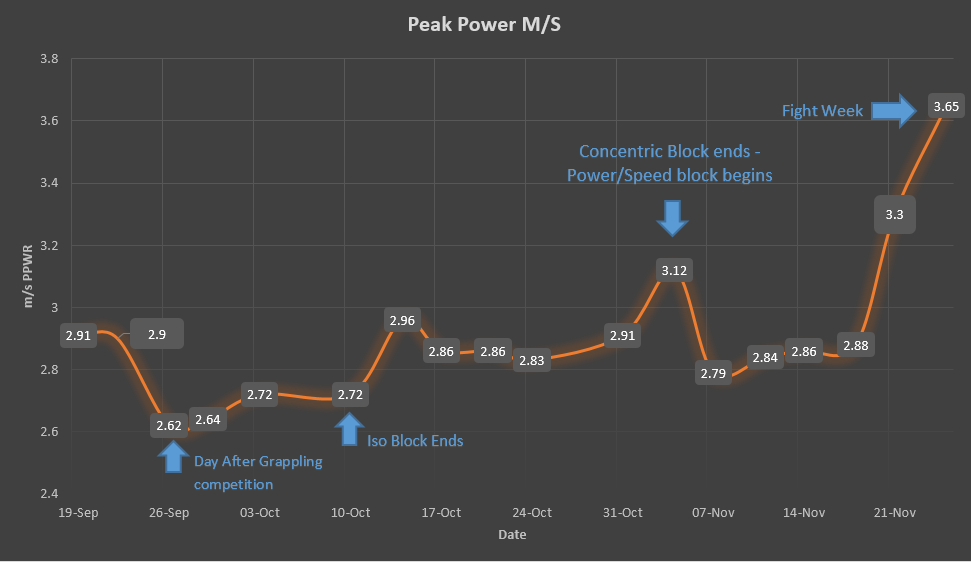
I've noted down a few key moments during camp, including when training blocks end or any significant impact on Power values.
As you can see there is a big upward trend in peak power, as freshness improves moving up to the fight around 3-4 weeks out, you can also see the overall trend is an upwards one. She takes a bit of a knock around 4 weeks away but then it starts to improve rapidly. Why? Because this is when toughest sparring rounds really start to take their toll and I as a strength and conditioning coach focus on match specific velocities and modalities to prepare for the fight.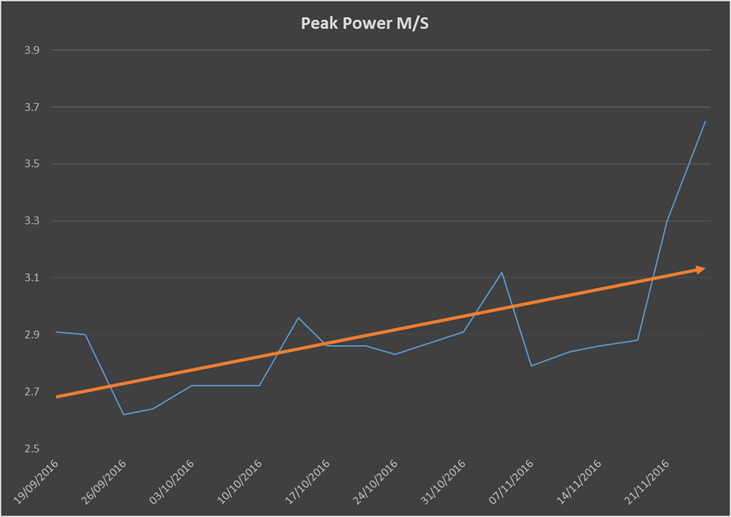
Excuse my school boy level chart skills, above is Cory's trend line.
Here is Wendy McKenna's Data, less data points as we can only take measures once per week. We see that same dip as the hard sparring kicks in, it was even at this point I had to miss a measure because Wendy had a sore back from stress of training plus working stress.
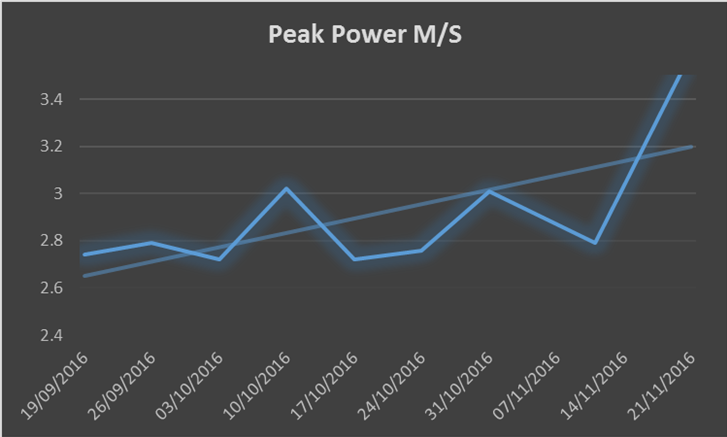
Why is this tracking important?
It shows that you are hitting the phases of suppression and super compensation properly in your approach to physical readiness. Above we can see gradual progressive improvements in Peak Power values but this isn't entirely what I'm monitoring here.
I was recently interviewed about the method by Simplifaster and explained why tracking suppression is more important than improvement.
"What I’m looking for here is largely suppression of peak power values due to shifts in training load. MMA fighters intensify around eight weeks from competition. Countermovement jump height and squat jump power are correlated to an athlete’s speed.
Borrowing from what I learned from Dr. Dan Baker, if the mean/average velocity is down on most reps by greater than 5-8%, we need to check peak velocities. Paraphrasing Dan, “if the peak velocities are down by greater than 10-15%, it suggests the SSC is fatigued and the athlete is overreached or under-recovered. This may be OK in a hard, training phase, but not in a peaking phase.” I communicate this back to their boxing, MMA and jujitsu coaches, who can then adjust training accordingly. They often corroborate what they see as the subjective change in the athlete’s training quality and movement. Meaning, we can reconcile objective and subjective measures."
Every decent coach who has picked up a training text book will have seen an image similar to this image below. Now compare this to the above images.
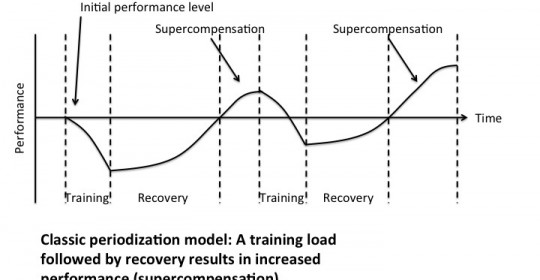 |
| Ride the wave form bro! |
Over time, if we carried on doing this for years, we'll see far more marginal changes in Power as training age matures. This is because to use the metaphor 'once the sword is forged it just needs sharpening'.
Wendy and Cory Both won their pro debut and amateur title fights respectively, this type of info doesn't predict fight performance but it does give an indication of training effect and general direction of stimulus. Any sudden drop offs and its time to turn detective, what has the rest of their training entailed? Speak to their coaches to find out what are they doing. What might cause a sudden drop? After all we are only using Peak Power when their are plenty of other measures we could be using, such as readiness questionnaires, RSI, Blood measures, sleep analysis, HRV, etc.
I like this test because it is simple and straight forward.
 William Wayland is a strength coach and owner of Powering Through in Chelmsford, Essex, UK. Striving for performance that can be measured in success on the field, on the court, in the ring or in the cage. William works with Olympians, UFC fighters and other high level athletes.
William Wayland is a strength coach and owner of Powering Through in Chelmsford, Essex, UK. Striving for performance that can be measured in success on the field, on the court, in the ring or in the cage. William works with Olympians, UFC fighters and other high level athletes.
Check out William’s Articles on fightcampconditioning.com
- High Velocity Peaking Methods
- How to Prepare for a Fight
- Diaphragmatic Breathing Drill for Lifting and Recovery




